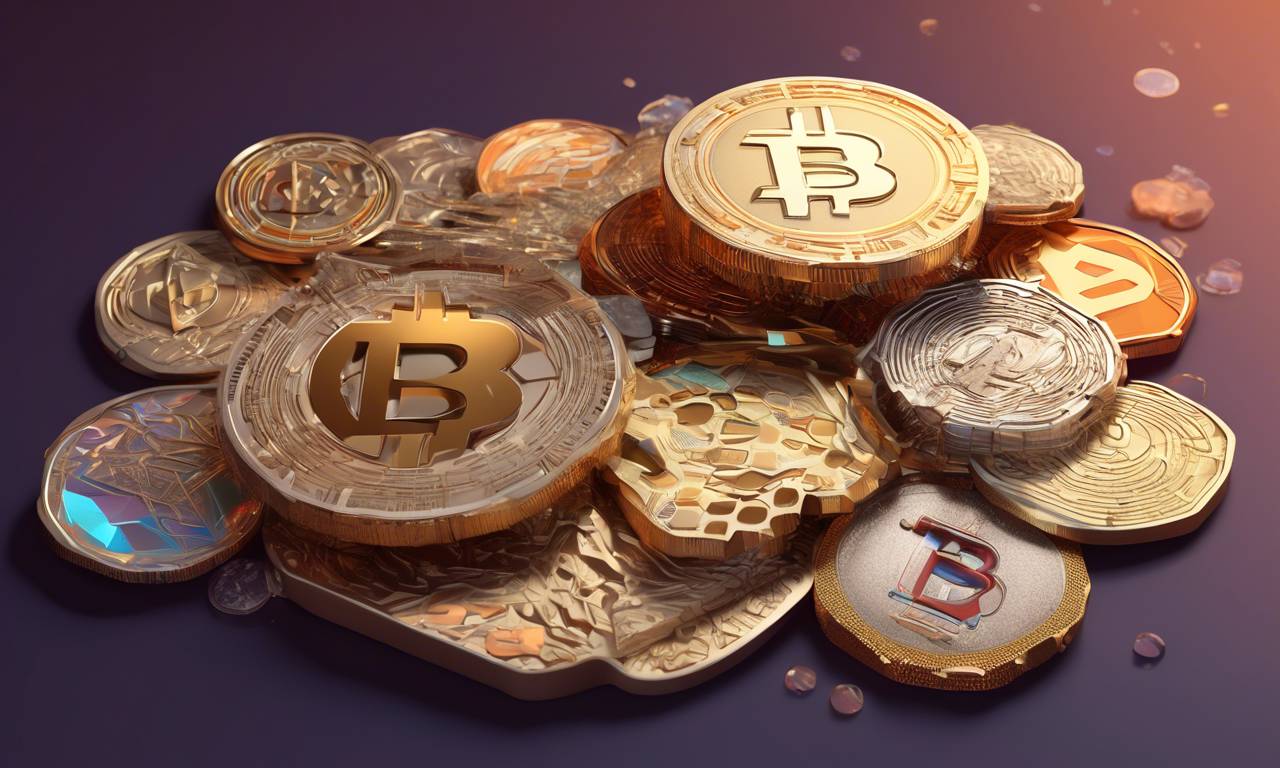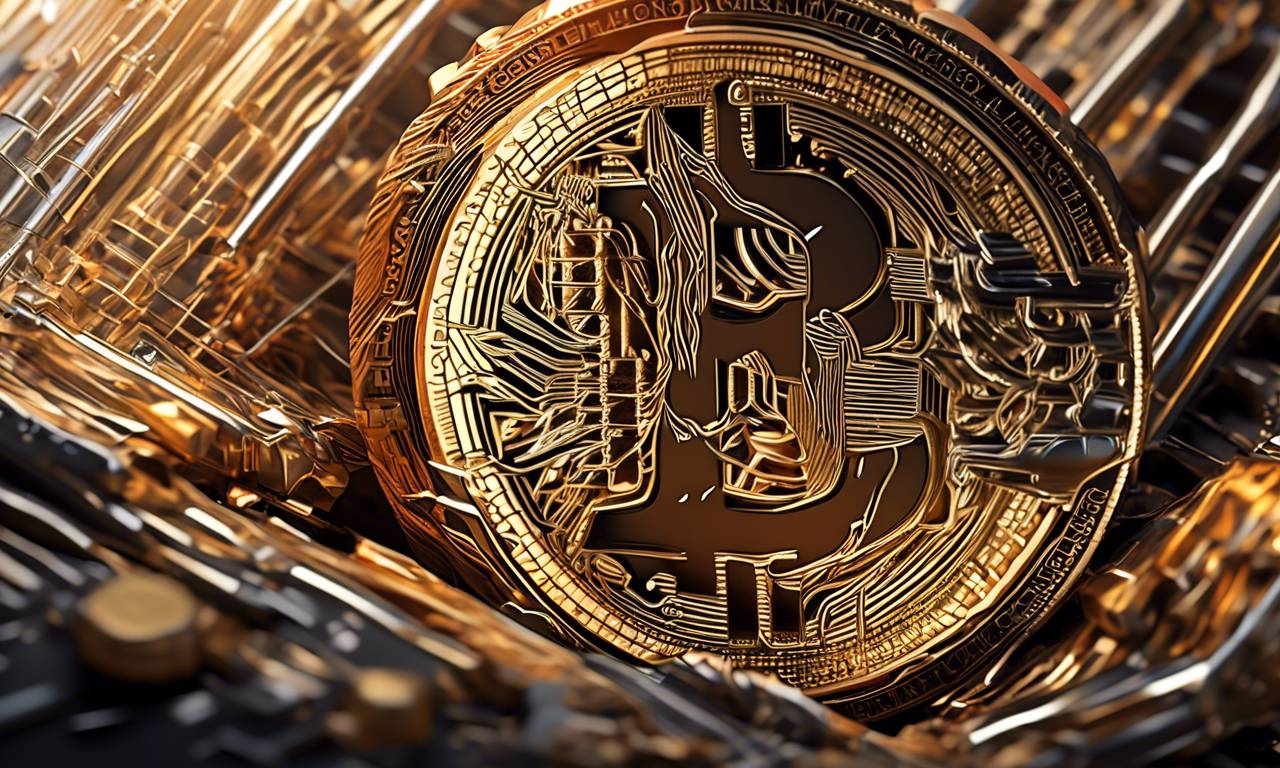Semi-Fungible Crypto Tokens: Blending the Best of Fungible and Non-Fungible Tokens
Greetings, fellow crypto enthusiasts! Have you heard about semi-fungible crypto tokens? 🚀 If you’re familiar with the world of cryptocurrencies, you probably already know about the two main types of tokens – fungible and non-fungible. But what if we told you there’s a fascinating new breed of tokens that combines the best features of both? In this article, we’ll dive into the exciting realm of semi-fungible tokens (SFTs) and explore why they are gaining traction in the crypto community. So fasten your seatbelts and let’s embark on this thrilling journey together! 💫
Understanding Fungible and Non-Fungible Tokens
Before we delve into the concept of semi-fungible tokens, let’s quickly recap what fungible and non-fungible tokens are. 🔄
Fungible Tokens: These are cryptocurrencies or digital assets that are interchangeable with each other. They hold equal value, making them mutually substitutable. For example, if you have one Bitcoin and exchange it for another, it doesn’t matter which specific Bitcoin you receive; they are all identical in value.
Non-Fungible Tokens (NFTs): On the other end of the spectrum, NFTs are unique digital assets that cannot be replaced or exchanged on a one-to-one basis. Each NFT possesses distinct characteristics, making it irreplaceable. Famous examples include CryptoKitties or digital artwork sold as NFTs.
The Rise of Semi-Fungible Tokens
Now that we have a good grasp of fungible and non-fungible tokens, let’s explore the emergence of semi-fungible tokens. 🌟
SFTs combine the advantages of both fungible and non-fungible tokens, providing a new level of flexibility and utility in the crypto space. These tokens possess some identical properties while also allowing for unique attributes within a limited set. Think of them as a hybrid that bridges the gap between fungibility and uniqueness.
Use Cases for Semi-Fungible Tokens:
- Gaming: SFTs can be used to represent in-game items or characters with varying attributes. Imagine owning a sword in a game where you can change its appearance or upgrade its power. SFTs make this possible by combining fungible aspects (e.g., interchangeable sword) with non-fungible traits (e.g., unique appearance or abilities).
- Supply Chain Management: SFTs can track and authenticate products, ensuring transparency and reducing counterfeiting risks. Each token may have identical information about the product’s origin, but unique identifiers can differentiate individual items within a batch.
- Real Estate Fractional Ownership: With SFTs, you can own fractional shares of real estate properties. These tokens allow for divisibility while maintaining some common properties like voting rights or revenue distribution.
The Advantages of Semi-Fungible Tokens
You might be wondering, “Why should I care about semi-fungible tokens?” Well, dear reader, here are some compelling advantages that make SFTs worth exploring:
- Enhanced Flexibility: SFTs offer a flexible approach to tokenization by combining the best elements of fungible and non-fungible tokens. This enables a wide range of applications across various industries.
- Improved Interoperability: With SFTs, it becomes easier to interact with both fungible and non-fungible tokens within a single ecosystem. This interoperability expands the possibilities for developers and users alike.
- Efficient Asset Management: SFTs allow for easy tracking and management of assets, whether in gaming, supply chain, or other sectors. These tokens provide a standardized framework for representing unique assets while maintaining certain common properties.
Frequently Asked Questions (FAQs)
Q1: Can semi-fungible tokens be created on any blockchain?
A1: Yes, SFTs can be created on various blockchain platforms like Ethereum, Binance Smart Chain, or Flow. The choice of blockchain depends on the specific requirements of the project.
Q2: Are semi-fungible tokens interchangeable with each other?
A2: While SFTs share some identical properties, they may have unique attributes that differentiate them within a limited set. So, while they are not fully interchangeable like fungible tokens, they offer more flexibility than non-fungible ones.
Q3: How can I get started with semi-fungible tokens?
A3: To explore the world of SFTs, you can start by researching projects that utilize these tokens. Look for decentralized applications (dApps) or games that incorporate semi-fungible assets and dive into their respective ecosystems.
Q4: Are semi-fungible tokens here to stay?
A4: While it’s challenging to predict the future with absolute certainty, semi-fungible tokens have gained significant attention and are being actively explored by developers and entrepreneurs. Their potential to bridge the gap between fungibility and uniqueness makes them a fascinating area to watch.
Conclusion
Congratulations, dear reader! You’ve now ventured into the world of semi-fungible tokens and discovered their unique qualities. These tokens combine the best of both fungible and non-fungible assets, offering enhanced flexibility, improved interoperability, and efficient asset management. As the crypto space continues to evolve, keep an eye out for exciting projects utilizing SFTs. Who knows? You might stumble upon the next groundbreaking application that revolutionizes an industry! 🌐





 By
By
 By
By
 By
By


 By
By